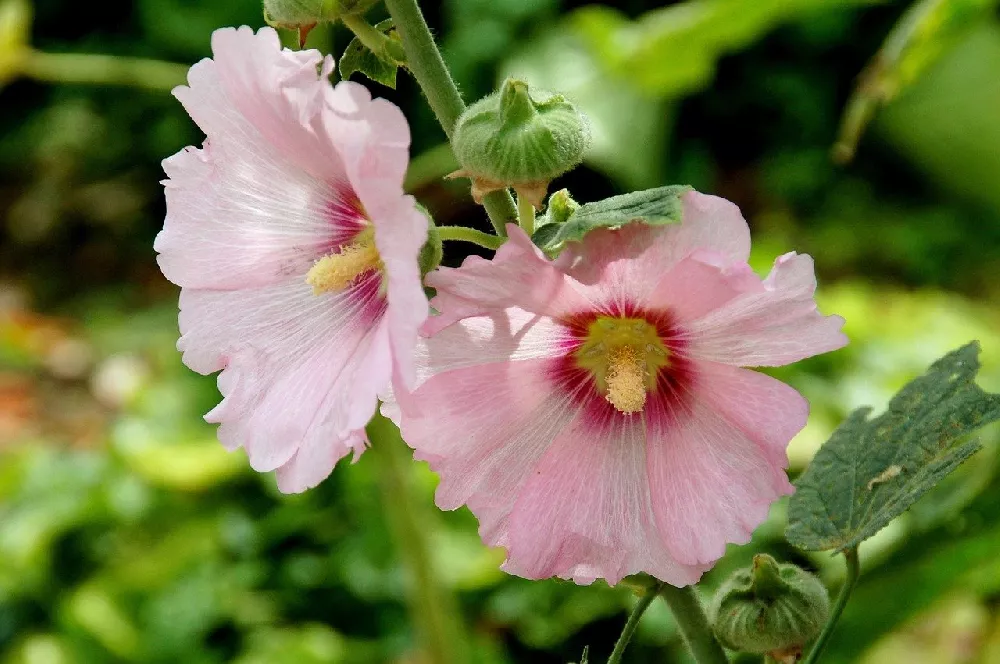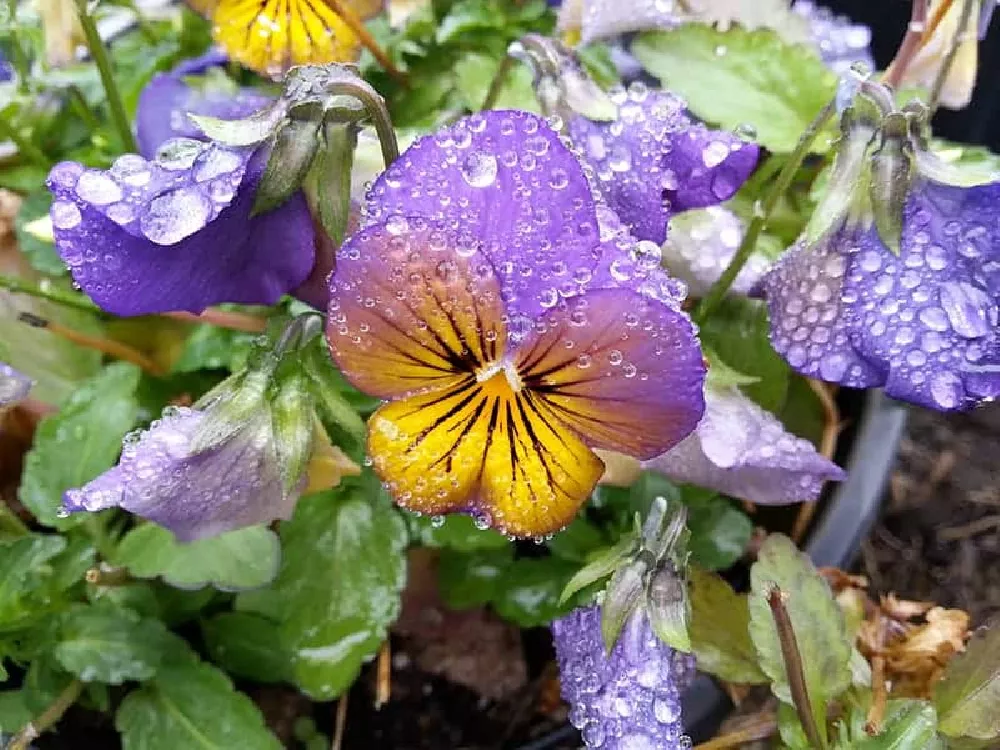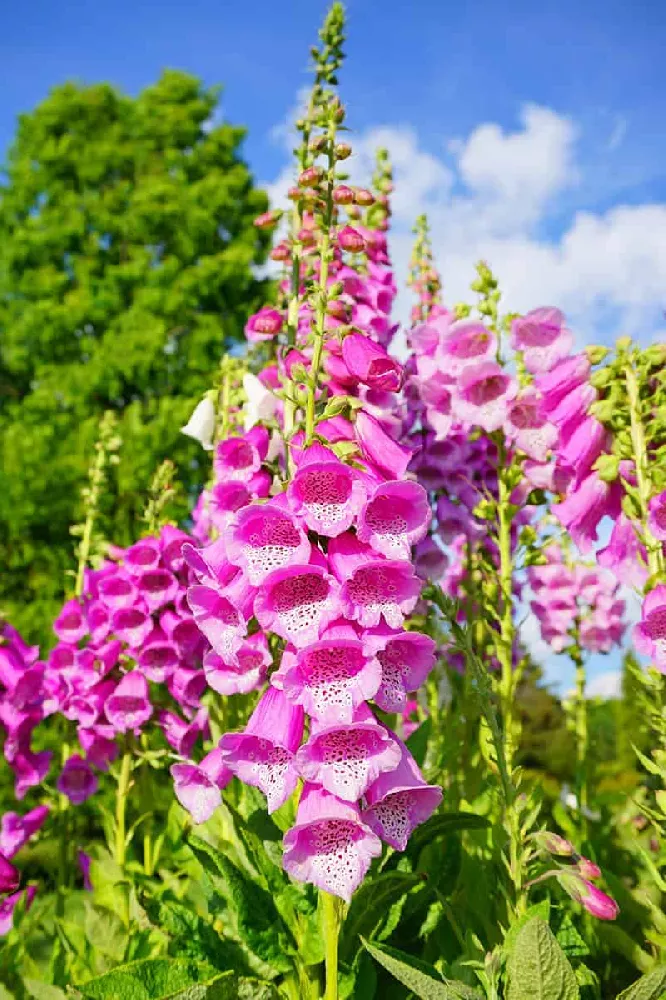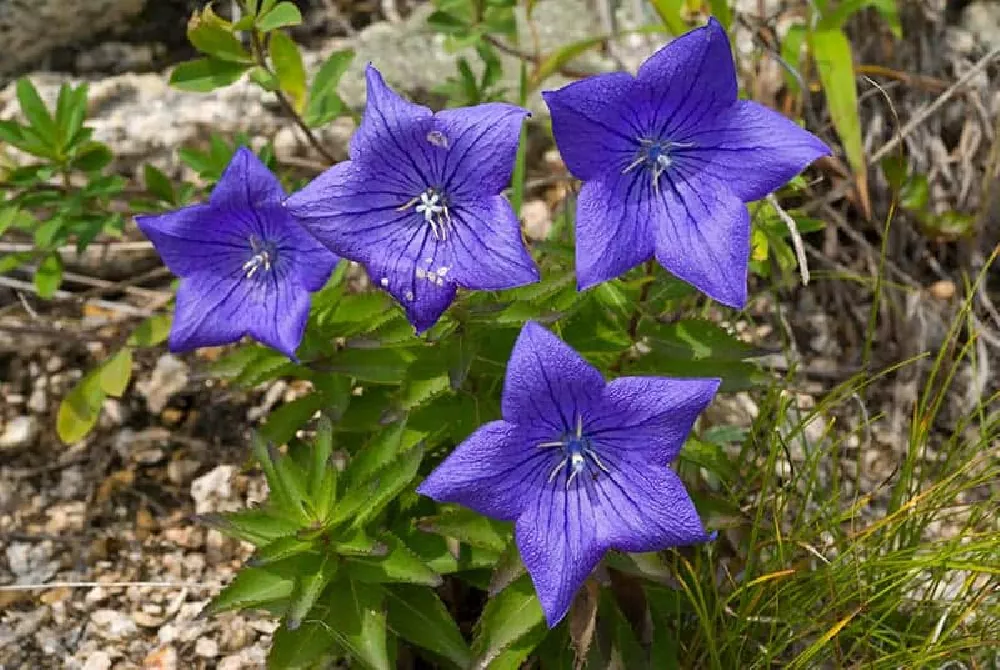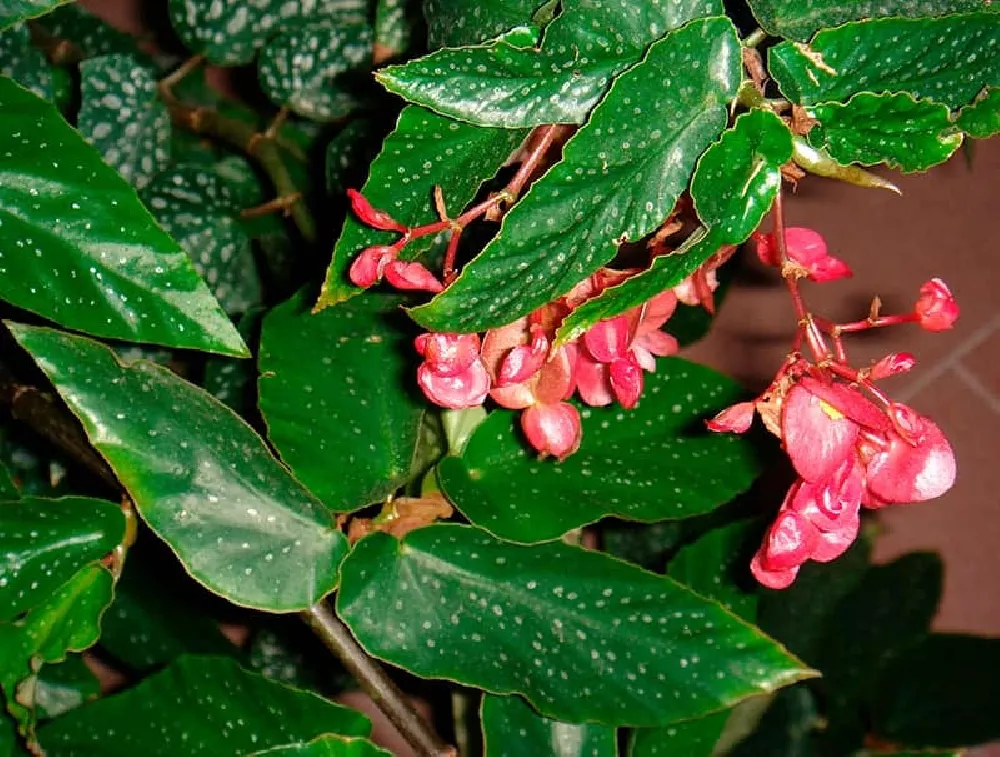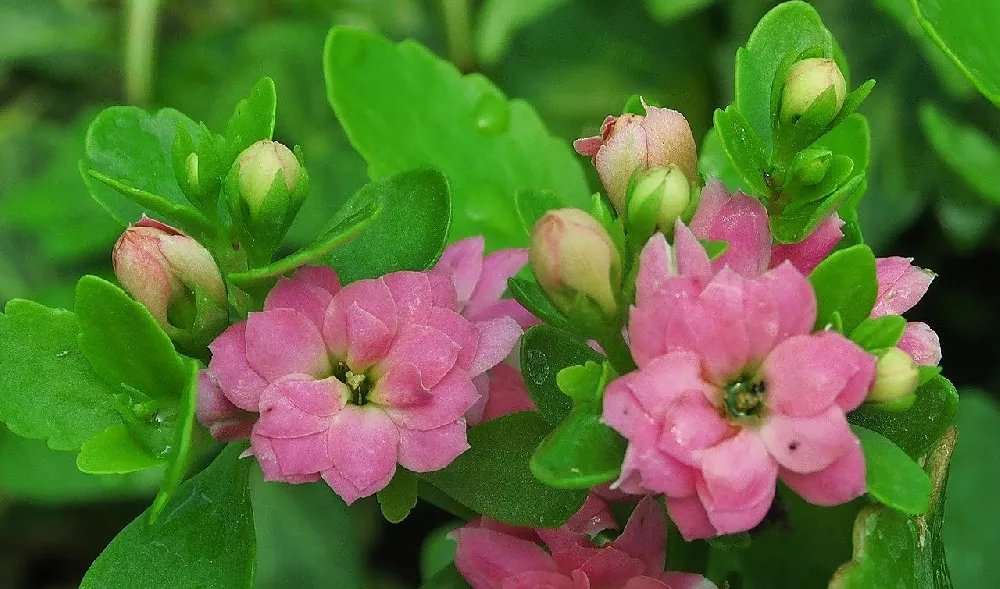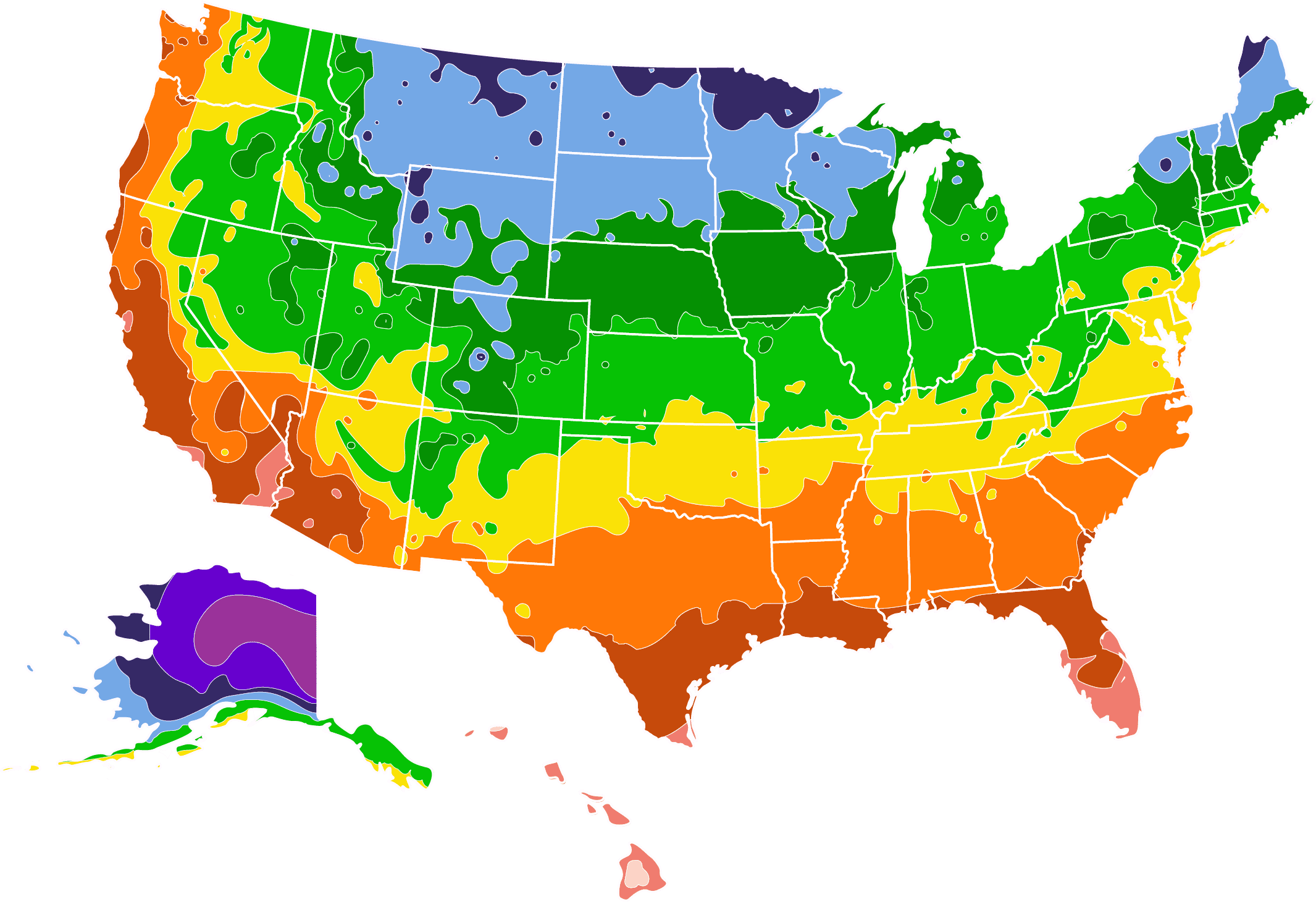- Home >
- Flowers >
- Plants with Black Flowers >
- Hollyhocks
Plant Care
Sunlight

Survives in both full sunlight and partial shade. Six hours of sunlight is often ideal.
Watering
Water weekly or more once established. Avoid getting leaves wet.
Fertilizing

Apply a balanced fertilizer twice per year.
Tall and graceful with brightly colored flowers, hollyhocks, or Alcea rosea, are a classic garden staple. Most of this genus’ 60 species are wildflowers native to Asia and Europe, but hollyhocks have taken well to being grown in North America. While these plants are susceptible to some diseases and pests, overall they are easy to care for and reward attentive gardeners with beautiful blooms throughout the growing season. Other notable hollyhocks characteristics include:
- Available in a wide variety of colors
- Self-seeding plants that propagate easily
- Can grow up to 8 feet tall, adding an attractive vertical element to gardens
Planting and Care
Planting instructions
In North America, hollyhocks grow best in hardiness zones 3-8. The climate in which you live affects where you can plant your hollyhocks. In climates with cooler summers, hollyhocks can tolerate full sun, but if your summers are hotter, place them where they will receive afternoon shade. Hollyhocks can grow in most rich, well-draining soils. Plant your hollyhocks a few weeks after the last frost, spacing them about 2 feet apart. As mature hollyhocks can reach heights of up to 8 feet, it’s also important to plant them where they will have protection from strong winds.
Watering and nutrients
The watering needs of hollyhocks change throughout the plant’s life. When it is young, it must have continuously moist soil. To avoid waterlogged soil, which can cause root rot, plant your hollyhocks in well-draining soil. As the plant matures, it will become drought-tolerant, so you can decrease the frequency of watering. Hollyhocks are prone to fungal infections caused by damp leaves, so always water at base level in the morning so that water on the leaves has a chance to dry. Hollyhocks have minimal feeding needs; a light application of fertilizer or compost in the spring is usually sufficient.
Pruning
Hollyhocks do not require much pruning to stay healthy and attractive. However, because these plants are self-seeding, if you do not want them to reseed in your garden, deadhead flowers at the end of their life cycle by trimming them with clean, sharp shears or scissors. Otherwise, leave the spent flowers alone, and they will disperse seeds into the ground. In the fall, after the plant dies back to the ground, you can cut the stalks back to a few inches above the ground and cover with straw or mulch to help the dormant roots survive the winter.
Pests, diseases, and animals
The most common diseases for hollyhocks are hollyhock rust and powdery mildew. These are both fungal diseases caused by too much humidity on the leaves and can be prevented by watering at base level, making sure there is good air circulation, and removing debris from around the plant. These diseases spread quickly, so immediately remove infected leaves or the entire plant, if necessary. Japanese beetles, hollyhock weevils, and sawflies are the most common pests that bother hollyhocks and can usually be treated with insecticidal soaps or beetle traps. Hollyhocks are resistant to deer and rabbits.
Light
The amount of light your hollyhock needs will dictate where you plant it. Hollyhocks like plenty of sun, but they can also get scorched or wilt in extreme heat, so the amount of sun you can allow your hollyhock to receive will depend on your local climate. If your summers are fairly cool, then a position of full sun will be fine for your hollyhock, whereas if you live in a climate where summers are scorching hot, you will need to position your hollyhock in a spot where it can be protected from the afternoon sun.
Hollyhocks need at least six hours of direct sun a day in order to bloom, so pay careful attention to ensure your plant will get the necessary quota of sun if you are planting it in a position of partial shade.
Temperature
Hollyhocks grow in a temperature range of 60-90º F as long as conditions are ideal. If the temperature drops below 55º F, it will die back to the ground, and you will need to mulch the soil in order to insulate the dormant roots to protect them from getting too cold.
When the temperature reaches the top end of the scale and gets much warmer than 85º F, you will need to pay extra attention to watering your hollyhock, as the soil will dry out more quickly in this heat, and maintaining moist soil is vital for hollyhocks in hot climates. In very hot climates, you should ensure the plant is shaded during intense afternoon heat so that the plant doesn’t overheat. Also, take care to protect the plant from wind by positioning it in a sheltered location.
Humidity
Hollyhocks don’t have any humidity requirements and actually fare worse in climates with high humidity as this makes them more susceptible to diseases such as rust. Hollyhocks need good air circulation, so enable this by planting them around 18 inches apart.
Propagation
Most hollyhocks are biennials, which means they produce vegetation in their first year, and flower in their second year, before completing their life cycles. In some conditions, hollyhocks will flower for several years, where they are considered short-lived perennials. If you enjoy having hollyhocks reappear year after year, you needn’t be concerned by their short life span, as they are able to reseed without any intervention.
To allow the hollyhocks to reseed and produce future years of plants, simply refrain from deadheading the flowers until the seeds have dropped and dispersed. If you’d like more control over where the seeds get planted, you can harvest the seeds from the spent hollyhock flowers and sow them yourself. They can be sown indoors over winter ready for transplanting outside in spring, or you can sow them directly into the ground in spring.
Flowering
Hollyhock flowers are the attraction of this plant. They come in various colors, including pink, purple, red, blue, white, and yellow, and cover their spike-like stems from base to tip. They bloom in the plant’s second year, appearing in mid-summer and typically lasting from June through to August. The flowers are quite large, measuring around four inches across, and are shaped like shallow funnels (Royal Horticultural Society).
Frequently Asked Questions
How much light do hollyhocks need?
Generally speaking, hollyhocks are sun-loving plants that require about six hours of sunlight each day to bloom. However, the type of sun an individual plant should receive depends on the climate in which it is planted. Hollyhocks will get scorched and wilt in extreme heat, so if you live in a location with summer temperatures that consistently exceed 85 degrees Fahrenheit, it is best to plant your hollyhocks in a location where they will receive shade during the hottest part of the day.
What temperature is ideal for hollyhocks?
Hollyhocks can typically grow in temperatures ranging from 55 degrees Fahrenheit to 90 degrees Fahrenheit. If you live in a climate with near-freezing or freezing winter temperatures, mulch the soil around your hollyhocks to insulate dormant roots. Meanwhile, if summer temperatures are consistently above 90 degrees Fahrenheit, water your hollyhocks frequently to ensure their soil stays moist, and position them where they will have shade from afternoon sun. Hollyhocks do not like humidity, which can cause diseases.
Are there multiple varieties of hollyhocks?
Yes, there are roughly 60 different species of hollyhocks, most of which are native to Asia and Europe. There is one species, the streambank wild hollyhock, that is native to North America. Different species feature different colored flowers. For example, ‘Blacknight’ has dark purple flowers that are almost black; ‘Fiesta Time’ has bright pink flowers; ‘Queeny Purple’ has bright purple flowers, and ‘Chater’s Double’ come in a variety of colors, including salmon, yellow, white, and red.
Do hollyhocks return year after year?
The majority of hollyhocks species are biennials, meaning they have a two-year lifespan. Depending on how early in the spring they are planted, some varieties will flower in their first year. Others will flower in their second year, then die away. However, because hollyhocks are self-propagating (seeding the ground around them once their flowers die) many people believe their hollyhocks are perennials. If you would like hollyhocks in your garden consistently, allow the plants to self-seed.
Are hollyhocks poisonous?
In general, hollyhocks are not toxic if ingested by people or animals, but they can cause skin irritation for any person or animal that comes in contact with them. This can result in redness and itching on the skin and irritation in the mouth if they are ingested. It is recommended that you keep hollyhocks out of reach of curious pets and children, and wear protective gloves when handling these plants.
Hollyhock Varieties
Alcea rosea ‘Chaters double’
These hollyhocks have a romantic feel, with their frilly double flowers. They bloom in their second year and come in a variety of colors.
Alcea rosea ‘Blacknight’
This hollyhock makes a real statement in any garden, with its unusual flowers in a deep shade of almost black. It is the darkest flowering hollyhock available and acts more like a perennial than biennial.
Alcea rosea ‘Majorette mix’
If planted soon enough, this dwarf hollyhock will bloom in the first year. It comes in an array of colors, including orange, red, yellow, and pink. It grows to just two feet tall and has a bush-forming habit.
Alcea rosea ‘Fiesta time’
In a vibrant cerise pink, this hollyhock blooms in its first year of life. It grows to three feet tall, making it ideal for growing in containers.
FAQs
How much light do hollyhocks need?
What temperature is ideal for hollyhocks?
Hollyhocks can typically grow in temperatures ranging from 55ºF to 90º F. If you live in a climate with near-freezing or freezing winter temperatures, mulch the soil around your hollyhocks to insulate dormant roots. Meanwhile, if summer temperatures are consistently above 90º F, water your hollyhocks frequently to ensure their soil stays moist, and position them where they will have shade from afternoon sun. Hollyhocks do not like humidity, which can cause diseases.
Are there multiple varieties of hollyhocks?
Yes, there are roughly 60 different species of hollyhocks, most of which are native to Asia and Europe. There is one species, the streambank wild hollyhock, that is native to North America. Different species feature different colored flowers. For example, ‘Blacknight’ has dark purple flowers that are almost black; ‘Fiesta Time’ has bright pink flowers; ‘Queeny Purple’ has bright purple flowers, and ‘Chater’s Double’ comes in a variety of colors, including salmon, yellow, white, and red.
Do hollyhocks return year after year?
The majority of hollyhocks species are biennials, meaning they have a two-year lifespan. Depending on how early in the spring they are planted, some varieties will flower in their first year. Others will flower in their second year, then die away. However, because hollyhocks are self-propagating, seeding the ground around them once their flowers die, many people believe their hollyhocks are perennials. If you would like hollyhocks in your garden consistently, allow the plants to self-seed.
Are hollyhocks poisonous?
In general, hollyhocks are not toxic if ingested by people or animals, but they can cause skin irritation for any person or animal that comes in contact with them. This can result in redness and itching on the skin as well as irritation in the mouth if they are ingested. It’s recommended that you keep hollyhocks out of reach of curious pets and children and wear protective gloves when handling these plants.
